Roll away chicken nesting boxes are designed to simplify egg collection and keep hens comfortable. They feature a convenient roll-out tray for easy egg gathering, reducing stress and encouraging consistent laying. This innovative design helps backyard chicken keepers maintain a clean and efficient coop environment.
1.1 What Are Roll Away Nesting Boxes?
Roll away nesting boxes are specialized structures designed for backyard chicken keepers to make egg collection easier and more efficient. These boxes feature a unique roll-out tray that allows eggs to gently roll out for collection, reducing the risk of breakage. They are typically elevated and designed with hens’ comfort in mind, providing a safe and private space for laying eggs. The roll-away mechanism simplifies maintenance and ensures cleanliness, as eggs are kept separate from bedding material. This design is particularly popular among poultry enthusiasts due to its practicality and ability to encourage hens to lay eggs consistently. They are a modern solution for efficient egg production and flock management.
1.2 Benefits of Using Roll Away Nesting Boxes
Using roll away nesting boxes offers numerous advantages for backyard chicken keepers. They simplify egg collection by allowing eggs to roll into a tray, reducing breakage and saving time. The design encourages hens to lay eggs in a clean environment, minimizing contamination. Additionally, these boxes reduce stress on hens by providing a comfortable and private space, which can improve egg production. Maintenance is also easier, as the roll-out tray allows for quick cleaning without disturbing the hens. Overall, roll away nesting boxes are a practical and efficient solution for managing a flock and ensuring a steady supply of fresh, clean eggs.
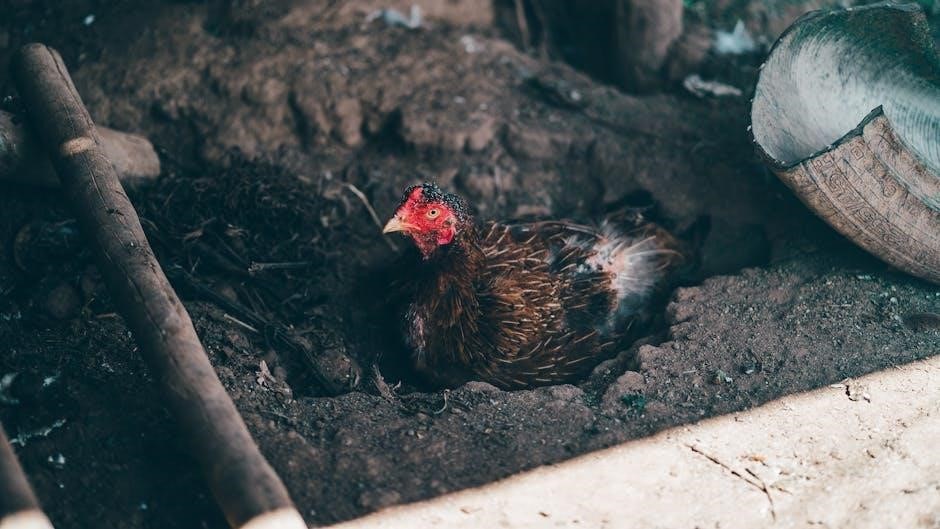
Design and Layout Considerations
Effective roll away nesting box design ensures functionality and hen comfort. Layout should prioritize space efficiency, easy egg access, and durability, enhancing overall flock productivity and egg collection.
2.1 Key Features of an Effective Roll Away Nesting Box

An effective roll away nesting box should include easy egg access, space-saving design, and durability. Features like a sloped roof to prevent roosting, removable trays for cleaning, and secure latches ensure functionality. Adequate ventilation and soft bedding promote hen comfort and reduce stress. The box size should accommodate larger hens comfortably, while the roll-out mechanism simplifies egg collection. Durable materials, such as high-quality wood or metal, extend the lifespan. Predator-proofing and easy assembly are also essential considerations for backyard chicken keepers. These features collectively enhance efficiency, hygiene, and overall flock productivity.
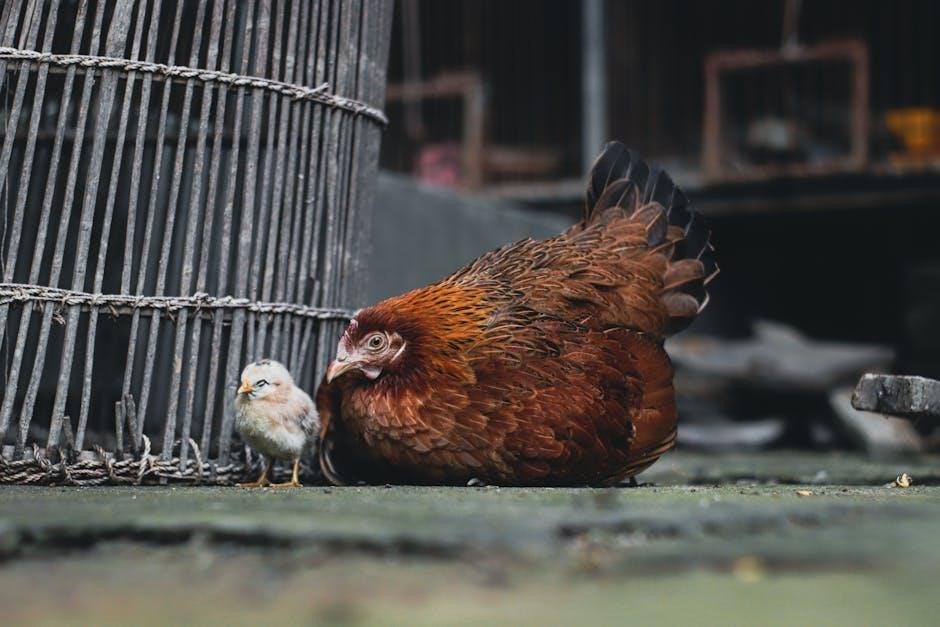
2.2 Space and Size Requirements
The size of a roll away nesting box should be tailored to the breed and number of hens. Larger hens require more space, typically 12×12 inches per box, while smaller breeds need about 10×10 inches. The height should be around 18-24 inches for easy access. Ensure the nesting box is positioned at least 3 feet off the ground to deter predators. Space-saving designs, like wall-mounted units, are ideal for smaller coops. Allocating one nesting box per 3-4 hens prevents overcrowding. Proper sizing ensures comfort, reduces stress, and promotes egg production. Planning the layout carefully maximizes both space and functionality in the coop.
2.3 Materials for Construction
When building roll away nesting boxes, durability and ease of cleaning are key. Wood is the most common material, with plywood or cedar being popular choices due to their strength and natural resistance to pests. Metal is another option, offering durability but potentially noisy for hens. Plastic nesting boxes are lightweight and easy to clean but may lack the sturdiness of wood. Regardless of material, smooth surfaces are essential to prevent splinters and make cleaning easier. Adding bedding like straw or wood shavings helps maintain hygiene and comfort. Proper materials ensure the nesting box is both functional and long-lasting, supporting the health and productivity of your hens.
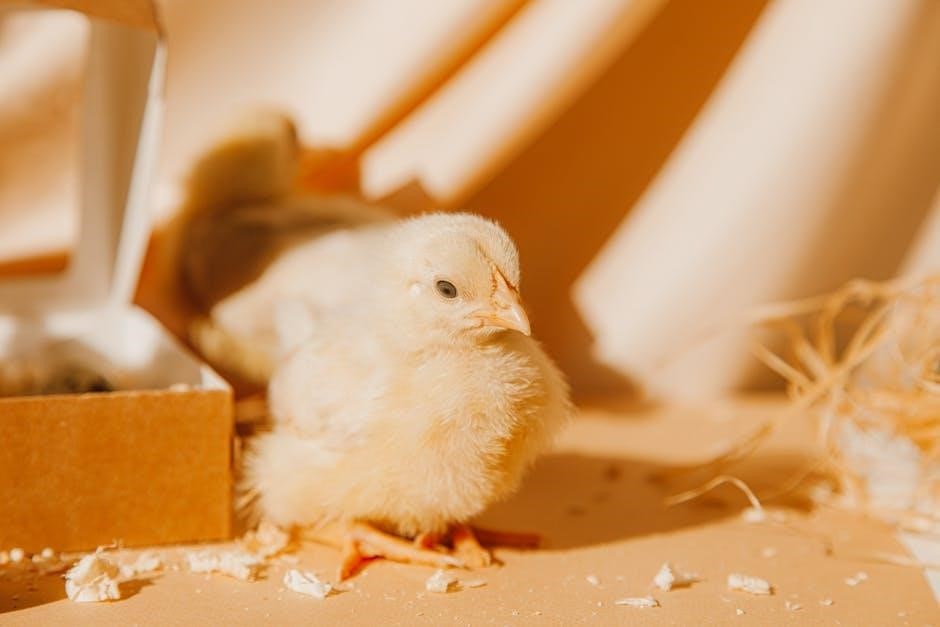
Building Your Roll Away Nesting Box
Constructing a roll away nesting box involves assembling the frame, attaching the roll-out tray, and ensuring smooth operation for easy egg collection and hen comfort.
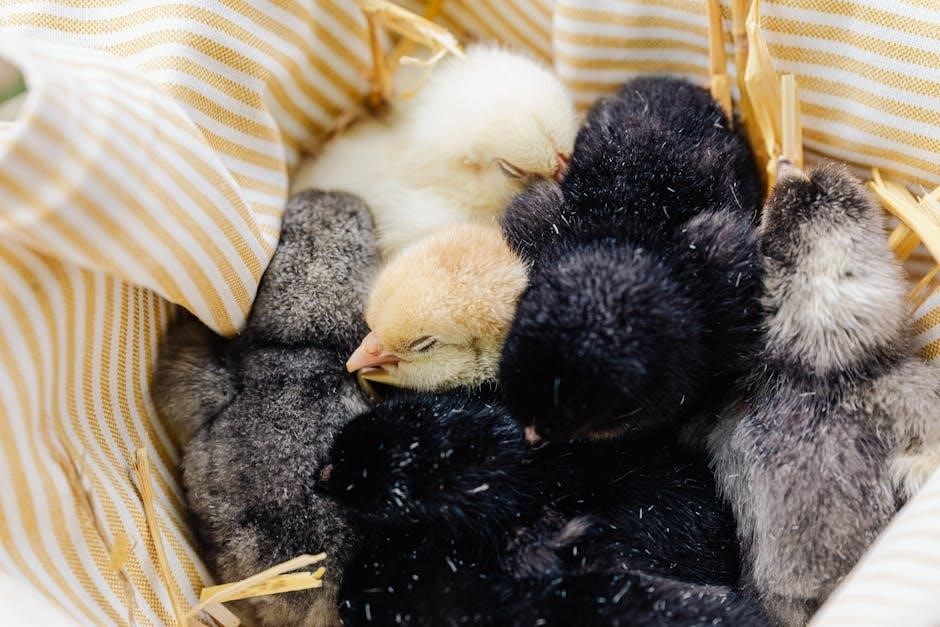
3.1 Tools and Equipment Needed
Building a roll away nesting box requires basic woodworking tools like a saw, drill, hammer, and measuring tape. Additional items include screws, nails, sandpaper, and a ladder for elevated setups. Safety gear such as gloves and safety glasses is essential. Materials like plywood or planks for the box and metal runners for the roll-out tray are necessary. Wire mesh may be used for ventilation, and bedding material like straw can be added for comfort. Ensure all tools are readily available to streamline the construction process and achieve a sturdy, functional design tailored to your flock’s needs.
3.2 Step-by-Step Construction Guide
Start by assembling the main nesting box structure using pre-cut plywood or planks. Attach the roll-out tray mechanism to the front, ensuring smooth operation. Install supports for the tray to prevent sagging. Next, add individual nesting compartments, spaced appropriately for hen comfort. Secure the roof and walls, leaving ventilation gaps for airflow. Attach legs or mount the box at a comfortable height. Finally, add bedding material like straw and position the box in a quiet, accessible location. Ensure all edges are sanded for safety and apply a weatherproof finish if outdoors. This step-by-step approach ensures a functional and durable nesting box for your flock.
3.3 Tips for DIY Enthusiasts
When building a roll-away nesting box, ensure accurate measurements to fit your coop space. Use durable, weather-resistant materials like plywood or cedar for longevity. Consider adding bedding like straw for hen comfort and easy cleaning. Install a smooth-rolling tray mechanism to prevent egg breakage. For ventilation, include small gaps to maintain airflow and reduce moisture. Test the roll-out system before final assembly to ensure proper function. Follow a detailed PDF guide for precise instructions and measurements. Customize the design based on your flock size and specific needs. Finally, sand all edges for safety and apply a non-toxic finish for outdoor use. This ensures a sturdy, functional, and hen-friendly nesting box.
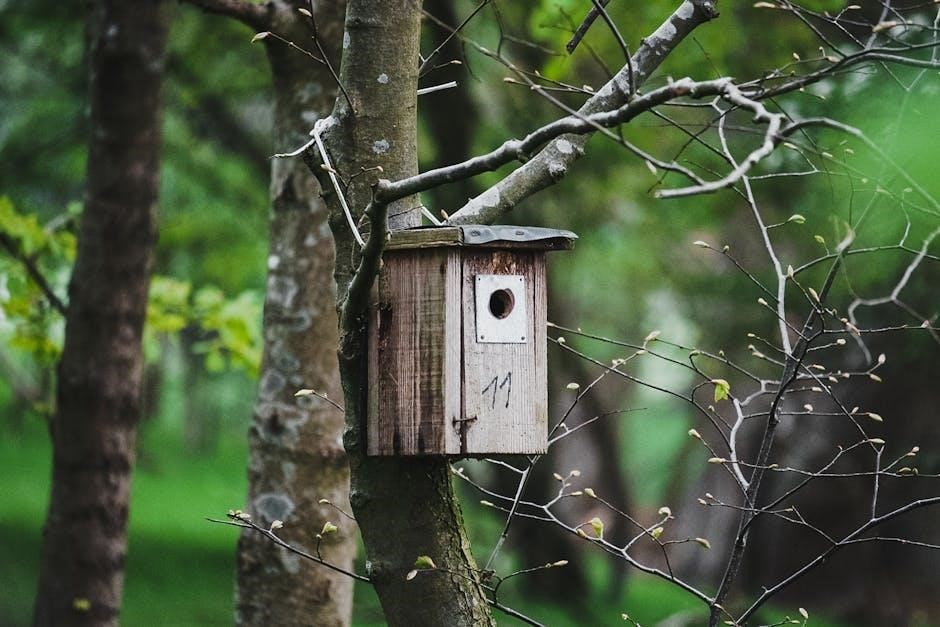
Maintenance and Cleaning
Regular cleaning prevents disease and keeps eggs clean. Disinfect surfaces and replace bedding often. Check for wear and tear to maintain functionality.
4.1 Importance of Clean Nesting Boxes
Clean nesting boxes are crucial for maintaining hen health and egg quality; Dirt and bacteria can lead to disease, reducing egg production and hen well-being. Regular cleaning removes soiled bedding and waste, preventing pests and odors. A clean environment encourages hens to lay eggs in the nesting box rather than elsewhere, making collection easier. Additionally, clean boxes reduce the risk of egg contamination, ensuring fresh, clean eggs for consumption. Proper maintenance also extends the lifespan of the nesting box, making it a cost-effective and sustainable solution for backyard chicken keepers.
4.2 How to Clean and Maintain Roll Away Boxes
To keep roll away nesting boxes in good condition, regular cleaning is essential. Start by removing all bedding and waste, then disinfect the surfaces with a pet-safe cleaning solution. Rinse thoroughly to ensure no chemical residue remains. Replace bedding with fresh, dry material like straw or wood shavings. Check the roll-out tray for any blockages or damage and repair as needed. Lubricate moving parts to ensure smooth operation. Finally, inspect for any signs of wear and tear, addressing issues promptly to prevent larger problems. Proper maintenance keeps the nesting box functional, hygienic, and appealing to your hens, ensuring consistent egg production and a healthy environment.
Common Mistakes to Avoid
One common mistake is using oversized nesting boxes, which can discourage hens from laying eggs properly. This can lead to broken eggs and reduced efficiency.
5.1 Overlooking Ventilation

Overlooking ventilation is a common mistake when building roll-away nesting boxes. Poor airflow can lead to ammonia buildup from droppings, stressing hens and reducing egg production. Moisture accumulation can also promote mold growth, harming the health of your flock. Proper ventilation ensures a dry, fresh environment, which is essential for both hen comfort and egg quality. Incorporating vents or windows in your design is crucial to maintain airflow and prevent these issues. While roll-away boxes simplify egg collection, neglecting ventilation can undermine their effectiveness and the overall well-being of your chickens.
5.2 Incorrect Placement of the Nesting Box
Incorrect placement of the nesting box can lead to reduced egg production and discomfort for hens. Nesting boxes should be positioned in a quiet, draft-free area of the coop to minimize stress. Placing them too low or at the wrong angle can discourage hens from using them. Additionally, boxes placed too close to feeding areas or roosting bars may be avoided by hens. Ideally, nesting boxes should be installed at a height of 2-4 feet off the ground to encourage use while keeping them accessible for egg collection. Proper placement ensures hens feel safe and comfortable laying eggs, maximizing productivity and egg quality.

Tips for Backyard Chicken Keepers
Encourage hens to use nesting boxes by placing bedding like straw inside. Collect eggs regularly to maintain cleanliness and discourage breaking. Ensure boxes are predator-proof and well-ventilated for optimal egg production and hen health.
6.1 Encouraging Hens to Use the Nesting Box
To encourage hens to use roll away nesting boxes, ensure they are comfortable and secure. Place soft bedding like straw inside to make the area inviting. Position boxes at a height hens can easily access, typically 2-4 feet off the ground. Maintaining cleanliness and providing adequate lighting can also promote usage. Introducing hens to the boxes gradually, especially when first installed, helps them adapt. Avoid disturbances near the nesting area to reduce stress. Training hens by placing dummy eggs in the boxes can also help them recognize the space as their laying spot.
6.2 Managing Egg Collection Efficiently
Efficient egg collection is a key benefit of roll away nesting boxes. The roll-out tray design allows eggs to gently roll into a collection area, reducing the risk of breakage. Regular checks ensure eggs are gathered before they cracked or soiled. Positioning the nesting box near the coop entrance saves time during collection. Keeping the tray clean and free of debris encourages hens to continue using it. For optimal results, consider the size of your hens when selecting or building a nesting box, as larger birds may need more space. These features make roll away boxes a practical choice for backyard chicken keepers.
Where to Find Roll Away Nesting Box Plans
Roll away chicken nesting box plans are easily available online, with free PDF downloads and pre-made options offering customizable designs for backyard chicken keepers.
7.1 Free PDF Plans Available Online
Free PDF plans for roll away nesting boxes are widely available online, offering detailed blueprints and instructions for DIY enthusiasts. These plans often include measurements, material lists, and step-by-step guides to help users construct their own nesting boxes efficiently. They cater to various skill levels, from beginners to experienced builders, ensuring that anyone can create a functional and durable nesting box. Many websites provide these plans as downloadable resources, making it easy for backyard chicken keepers to access and print them. This cost-effective option is ideal for those looking to save money while building a high-quality nesting box.
7.2 Purchasing Pre-Made Plans
Purchasing pre-made plans for roll away nesting boxes offers a convenient and professional solution for backyard chicken keepers. These plans are typically designed by experts and include detailed instructions, measurements, and material lists. They often come with additional features like customization options, ensuring the design meets your specific needs. While free plans are available, pre-made plans provide higher quality and reliability, making them a worthwhile investment for those seeking a durable and efficient nesting box. Many websites offer these plans for sale, catering to different coop sizes and styles. This option is ideal for those who value precision and ease of construction.

Troubleshooting Common Issues
Identify and resolve issues like eggs breaking in the roll-out tray or hens avoiding the nesting box. Adjust the tray angle, ensure box comfort, and check for mechanical issues.
8.1 Hens Not Laying Eggs in the Box
If hens avoid using the nesting box, it may be due to discomfort or stress. Ensure the box is clean, well-ventilated, and private. Check for predators or loud noises nearby. Adjust bedding material and ensure the box size suits your hens. Sometimes, hens prefer individual boxes, so consider adding more. Also, make sure the ramp to the nesting box is easy to climb. If issues persist, consult a poultry expert or adjust the box design based on your hens’ preferences. A calm and safe environment encourages proper egg-laying behavior.
8.2 Eggs Breaking in the Roll Out Tray
Eggs breaking in the roll-out tray can be frustrating. To prevent this, ensure the tray is lined with soft bedding like straw or rubber. Avoid using hard materials that may cause impact. Regularly collect eggs to prevent overcrowding, which can lead to breakage. Check the tray’s slope; if it’s too steep, eggs may roll too quickly. Consider adding a gentle curve or brake system to slow the eggs’ movement. Additionally, ensure the tray is securely attached to prevent jostling during collection. These adjustments will help protect your eggs and make gathering them easier and less stressful for both you and your hens.
The Importance of Nesting Boxes in Egg Production
Nesting boxes are crucial for egg production as they provide a safe, comfortable space for hens to lay eggs, reducing stress and encouraging consistent laying behavior.
9.1 How Nesting Boxes Influence Egg Laying Behavior
Nesting boxes play a significant role in influencing egg-laying behavior by providing hens with a safe, comfortable, and private space to lay eggs. A well-designed nesting box reduces stress and anxiety, encouraging hens to lay eggs consistently. The privacy and security offered by nesting boxes help hens feel protected, which is essential for their natural laying behavior. Additionally, the design of roll-away nesting boxes, with their convenient roll-out trays, prevents eggs from breaking and makes collection easier, further promoting a stress-free environment. This setup not only improves egg production but also ensures hens remain healthy and content.
9.2 Reducing Stress in Hens
Roll-away nesting boxes are designed to reduce stress in hens by providing a safe and comfortable environment for laying eggs. The enclosed, private space minimizes disturbances, allowing hens to feel secure. The roll-out tray prevents eggs from breaking, which can cause frustration and stress. Additionally, the design ensures easy egg collection, reducing the need for frequent disturbances. Hens prefer individual nesting boxes, as shared spaces can lead to competition and stress. A well-constructed nesting box with adequate bedding and proper ventilation further enhances comfort, promoting a calm and stress-free laying experience; This results in healthier, happier hens and consistent egg production.